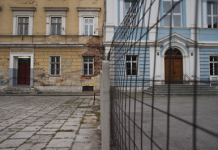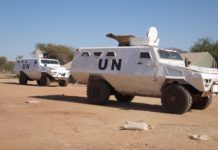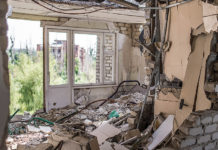The international community has a funding blind spot when it comes to Disaster Risk Reduction (DRR) in fragile and conflict affected states, despite these countries having the greatest need. Billions in humanitarian aid spent responding to natural hazard-related disasters (‘disasters’) in these difficult contexts are routinely wiped out by recurrent events. As climate change intensifies risks from natural hazards, DRR – the practice of reducing, preparing for and managing the impacts of disasters – must be made an urgent priority in these countries if the world is to deliver the Sustainable Development Goals (SDGs).
The World Humanitarian Summit 2016 marks the start of a process of reform that presents an opportunity for governments and funders to redress the neglect of DRR funding in fragile and conflict affected states. 58% of disaster deaths take place in the top 30 fragile states, yet DRR funding in these countries remains woefully low. For every $100 of emergency aid spent after a disaster, just $1.30 is spent on DRR before. In the Democratic Republic of Congo, this falls to 5 cents – and only 3 cents in Zimbabwe.
Climate finance could go some way towards bridging the DRR funding gap in fragile states because of various overlaps – from risk analyses and early warning systems to contingency planning and communication infrastructure. This presents only part of the solution; not all natural hazards are climate related and fragile and conflict affected states receive just 12% of multilateral finance for climate adaptation and mitigation.
This is despite the fact that such states are among the worst affected by climate change because of their poor ability to adapt. Funders tend to neglect DRR in fragile and conflict affected states as it is seen as too challenging. Poor infrastructure, misaligned political incentives, inadequate funds, low capacity, staff security issues, and the risk of insecurity distorting programme delivery are chief concerns.
New ways of working on DRR should factor in challenges related to state legitimacy and human rights, refugees and internally displaced people, and extreme poverty and violence. We therefore need to gain a better understanding of the interplay between disasters, conflict and fragility through research and pilot initiatives. Fragile and conflict affected states are the furthest from achieving the SDGs and present the hardest challenge in delivering the 2030 Agenda for Sustainable Development. Ending poverty for good will only be possible if all countries are equipped to deal with disasters. Both political and financial backing is needed.
They can be mobilised through specialist policy frameworks that address these unique challenges, and new systems that deliver and manage funds and DRR programmes.
Key recommendations:
• The World Humanitarian Summit should recognise the need for DRR in fragile and conflict affected states. Governments, UN agencies, NGOs and funders should formally commit to achieving the Sendai Framework for Disaster Risk Reduction (UNISDR, 2015) in difficult contexts.
• Reporting against UN global goals and targets should include DRR indicators with special reference to progress in difficult contexts. The effectiveness of DRR interventions, including in relation to geographical distribution, equality and conflict sensitivity should be assessed down to the sub-national level.
• Existing DRR methods should be adapted, or new tools developed, to better suit difficult contexts. This includes the integration of conflict sensitive approaches to DRR to help ensure interventions are contextually relevant and do not unintentionally cause harm. 2
• DRR programmes in fragile and conflict affected contexts should include a learning component. Experts in knowledge and learning generation can identify what does and does not work to inform future decisions, reflecting the reality that some degree of failure is normal for programmes in difficult contexts.
• A typology of DRR actions across different situations of conflict and fragility should be produced. Access to detailed case studies would provide an organising framework for practical recommendations on DRR across a diverse range of situations. • Regular sharing of data, experiences, and new technologies is needed. The development, humanitarian, and peace and security communities should work together to build a complete picture of what makes for effective DRR action in difficult contexts, from the local to international level.
• The latest evidence on DRR in fragile and conflict affected contexts should be showcased at major international convening spaces, including the 2016 Global Platform for Disaster Risk Reduction in Mexico, and through preparatory material, such as the Global Assessment Report (or future equivalent).
• Senior advisors to donors should build a politically relevant case to shift spending to before disasters strike. Donors contributing post-disaster humanitarian aid, particularly in contexts where crises occur in consecutive years, should be made aware that more can be achieved by investing in DRR.
• Climate finance institutions should adjust their eligibility criteria to support greater access and use of climate funds in challenging operating contexts. Pilot initiatives should be established to test the viability and impact of a shift in the geography of disbursement.
• DRR donors should diversify their portfolios to include fragile and conflict affected states. The Global Facility for Disaster Reduction and Recovery and Government of Japan have made progress in this area by supporting DRR in Afghanistan. Other funders should be encouraged to follow suit.
Read the full study When disasters and conflict collide
Grotius International
Derniers articles parGrotius International (voir tous)
- 54h pour innover pour l’Afrique – 13 juin 2019
- Guide Pratique Des Associations Et ONG Internationales Au Togo – 26 avril 2019
- Paul Salvanès, « La haine qu’il faut » – 13 mars 2018








